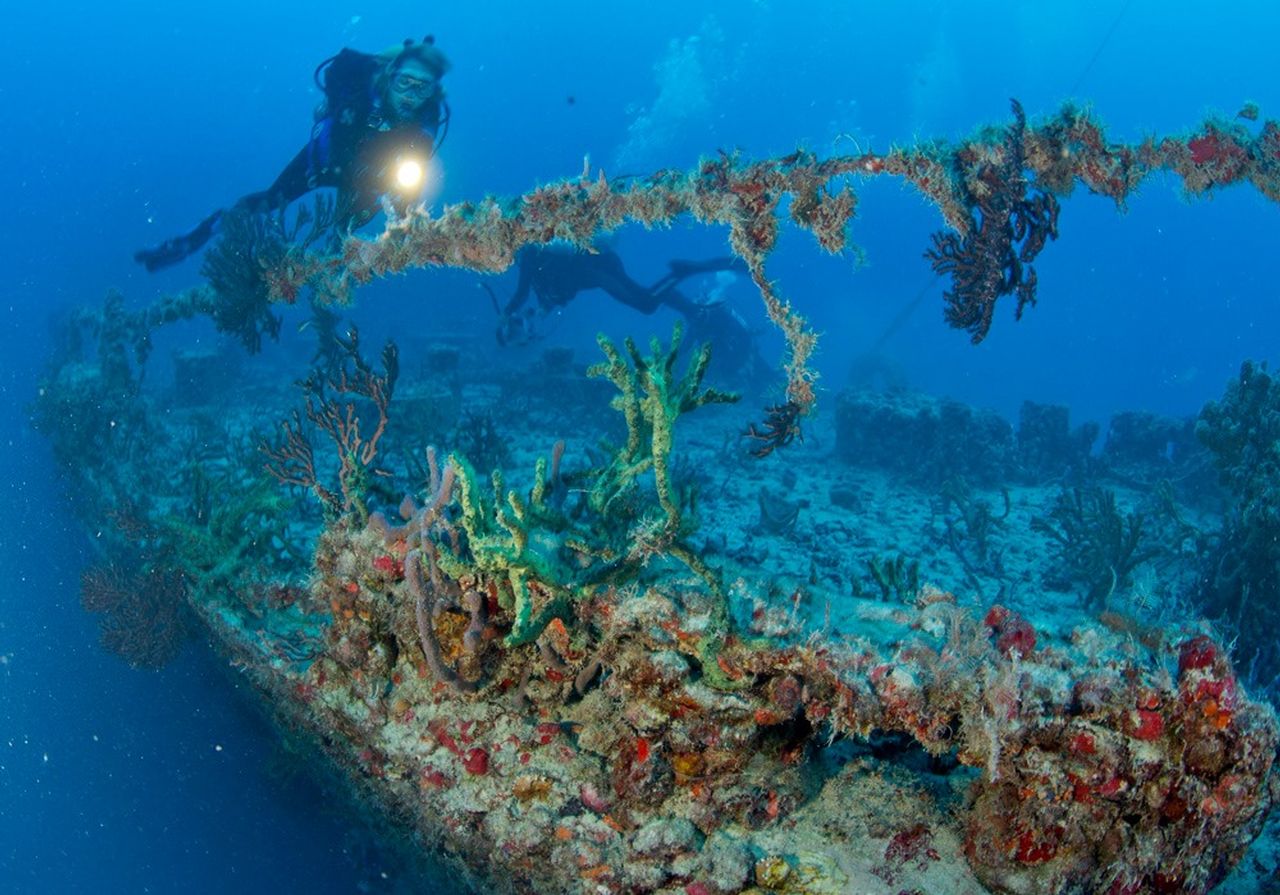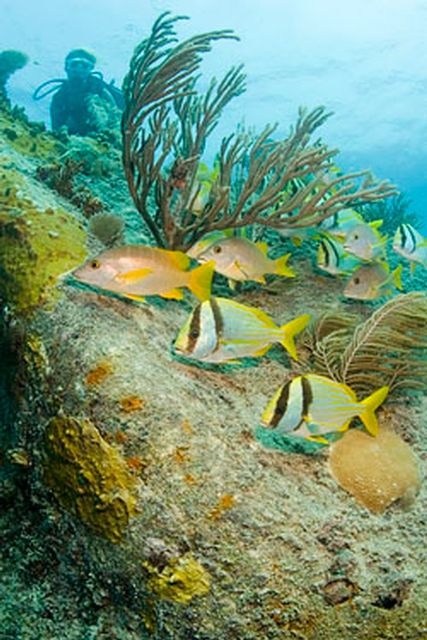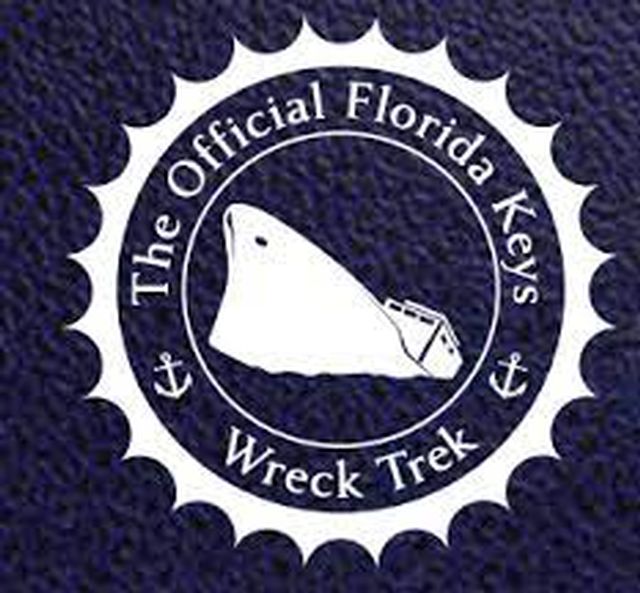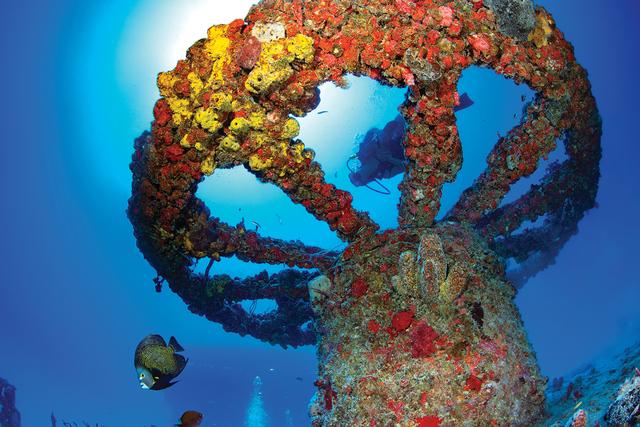Divers Explore History on Florida Keys Shipwreck Trails
FLORIDA KEYS — Divers in the Florida Keys can follow a fascinating underwater trail of shipwrecks stretching from Key Largo to Key West within the Florida Keys National Marine Sanctuary. In recent years, centuries-old wrecks have been joined by ships intentionally sunk to create artificial reefs that are now home to many varieties of fish and coral.
The marine sanctuary includes nine shipwrecks on its online Shipwreck Trail, featuring detailed information on the history and archeology associated with each shipwreck. The ships are the Adelaide Baker, Amesbury, Benwood, City of Washington, Duane, Eagle, North America, San Pedro and Thunderbolt.
The Benwood, which lies in 25 to 45 feet of water off the coast of Key Largo, is one of the more accessible shipwreck dives in the Keys. Serving as a merchant marine freighter, the ship sank after colliding at night with another vessel, the Robert C. Tuttle. The Benwood is now one of the most popular Keys shipwreck dive sites. Typically filled with fish, it’s a good choice for novice divers and snorkelers.
The oldest wreck on the Shipwreck Trail is the San Pedro, which sank in 18 feet of water just south of Indian Key near Islamorada during a 1733 hurricane. The ship was part of a Spanish treasure fleet attempting to sail from Cuba to Spain. Discovered in 1960, the San Pedro was heavily salvaged by treasure hunters, but the allure of possible remaining treasures still brings divers and snorkelers to explore the site. The wreck site is now preserved as San Pedro Underwater Archaeological Preserve State Park.
Four of the ships on the sanctuary’s Shipwreck Trail also appear on the Florida Keys Wreck Trek, established and promoted by the Florida Keys tourism council. Divers can download or request from their dive operator a Wreck Trek logbook to preserve the details of their dive experiences.
Of the nine shipwrecks on the Florida Keys Wreck Trek, only the Benwood wrecked unintentionally; the others were intentionally sunk to serve as artificial reefs. The ships on the trek are the Spiegel Grove, Duane and Benwood off Key Largo; the Eagle off Islamorada; the Thunderbolt off Marathon; the Adolphus Busch off the Lower Keys; and Joe’s Tug, the Vandenberg and the Cayman Salvager off Key West.
Thunderbolt was donated to the Florida Keys Artificial Reef Association by Florida Power and Light Co., which purchased the vessel in 1961 for use in researching electrical energy and lightning strikes — hence, its name. Thunderbolt lies in 120 feet of water 4 miles south of Marathon and was intentionally sunk March 6, 1986.
One of the stars of the Wreck Trek is the 510-foot-long Spiegel Grove, a former U.S. Navy landing ship dock whose 2002 sinking as an artificial reef off Key Largo went famously awry, ultimately leaving the ship lying on its starboard side. However, in 2005 strong ocean currents from Hurricane Dennis shifted the ship to an upright position as originally planned. The Spiegel Grove is the third-largest vessel in the world to be intentionally sunk as an artificial reef. The ship’s superstructure is visible starting at 45 feet, while the keel is settled on the bottom at 130 feet.
The 523-foot-long Gen. Hoyt S. Vandenberg became the world’s second-largest vessel to be deliberately sunk as an artificial reef. Located in nearly 150 feet of water approximately 7 miles south of Key West International Airport, the Vandenberg is the southernmost asset of the Florida Keys Wreck Trek and is filled with abundant sea life.
Only a few ships in Florida Keys waters carried gold or other rich cargoes. But from Spanish galleons to vessels more recently sunk as artificial reefs, they all offer treasures for today’s divers and snorkelers: prized and colorful marine life and a unique glimpse into history.
The wreck of the Benwood is typically filled with fish and is a good choice for novice divers and snorkelers. Photo: Bob Care




